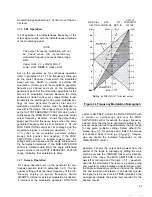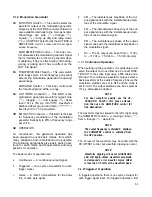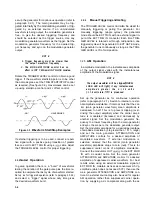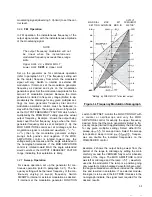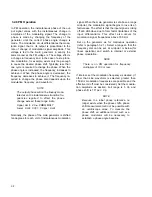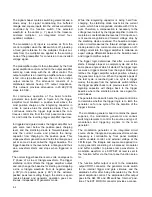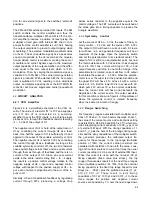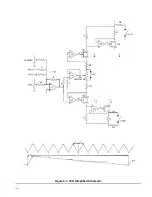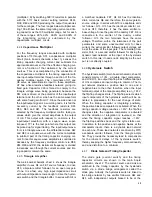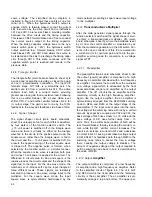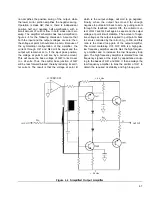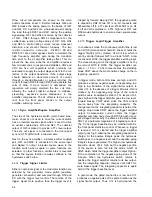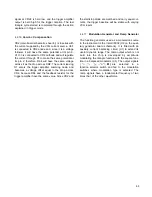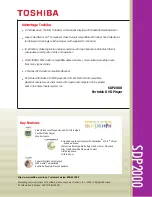
3.2.8 PM Operation
In PM operation, the instantaneous phase of the out-
put signal varies with the instantaneous change in
amplitude of the modulating signal. The change in
phase is made by changing the frequency of the
generator until the correct phase angle change is
made. The modulation circuit differentiates the modu-
lation signal; that is, its output is proportional to the
rate of change of modulation signal amplitude. This
voltage is fed to the ‘main’ generator in exactly the
same manner‘as the FM voltage is. The voltage effects
a change in frequency and, in the case of a step func-
tion modulation, for example, exists only long enough
to cause the desired phase shift. Typically, less than
one cycle is required to change the phase. When the
phase angle is increased, the frequency increases to
achieve it. When the phase angle is decreased, the
frequency decreases to achieve it. The frequency re-
quired to change the phase also depends upon the
modulation frequency and waveform.
NOTE
The output phase will not be linearly modu-
lated wh en the instantaneous transition fre-
quencies required to effect the phase
change exceed these range limits.
Upper Limit: 2.0
x
FREQ MULT
Lower Limit: 0.001 X Upper Limit
Nominally, the phase of the main generator is shifted
ten degrees for each volt of instantaneous modulation
signal. When the main generator is set above a range
midpoint, the modulation signal begins to lose its ef-
fectiveness. The effect is that the input signal is rolling
off at 6 dB/octave due to form factor limitations of the
input differentiator. This effect also occurs for
modulation signal frequencies above 150 kHz.
Set up the generator as for continuous operation
(refer t o paragraph 3.2.1). Select a range so that the
frequency dial can be set, at midpoint or below (for
linear operation) and switch to internal or external
phase modulation.
NOTE
There is no PM operation for frequency
multipliers of 100 or less.
If internal, set the modulation frequency as desired. (If
other than sine waveform is selected, greater than
150 kHz modulation frequencies are possible and the
effective roll off must be considered.) Set the modula-
tion amplitude as desired. Full range is 5 Vp and
phase shift is 10° per 1 Vp.
NOTE
Because the initial phase reference no
longer exists when the phase shifts, phase
shift measurement will not be possible with
an oscilloscope alone. To measure the
phase shift, an additional circuit such as a
phase modulator will be necessary to
establish a phase angle baseline.
3-6








